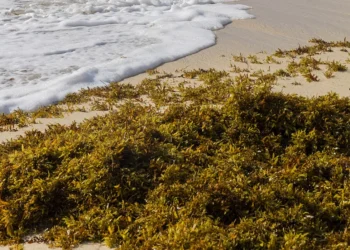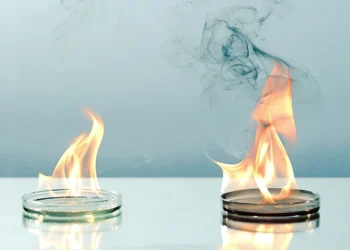When corals are stressed by changes in conditions such as temperature, light, or nutrients, they expel the symbiotic algae living in their tissues, causing them to turn completely white.
 Can coral survive a bleaching event? If the stress-caused bleaching is not severe, coral have been known to recover. If the algae loss is prolonged and the stress continues, coral eventually dies.
Can coral survive a bleaching event? If the stress-caused bleaching is not severe, coral have been known to recover. If the algae loss is prolonged and the stress continues, coral eventually dies.
Warmer water temperatures can result in coral bleaching. When water is too warm, corals will expel the algae (zooxanthellae) living in their tissues causing the coral to turn completely white. This is called coral bleaching. When a coral bleaches, it is not dead. Corals can survive a bleaching event, but they are under more stress and are subject to mortality.
In 2005, the U.S. lost half of its coral reefs in the Caribbean in one year due to a massive bleaching event. The warm waters centered around the northern Antilles near the Virgin Islands and Puerto Rico expanded southward. Comparison of satellite data from the previous 20 years confirmed that thermal stress from the 2005 event was greater than the previous 20 years combined.
Not all bleaching events are due to warm water.
In January 2010, cold water temperatures in the Florida Keys caused a coral bleaching event that resulted in some coral death. Water temperatures dropped -6.7 degrees Celsius (12.06 degrees Fahrenheit) lower than the typical temperatures observed at this time of year. Researchers will evaluate if this cold-stress event will make corals more susceptible to disease in the same way that warmer waters impact corals.
Infographic Transcript: What is coral bleaching?
- Coral Bleaching. Have you ever wondered how a coral becomes bleached?
- Healthy Coral: Coral and algae depend on each other to survive. Corals have a symbiotic relationship with microscopic algae called zooxanthellae that live in their tissues. These algae are the coral’s primary food source and give them their color Stressed Coral: If stressed, algae leaves the coral. When the symbiotic relationship becomes stressed due to increased ocean temperature or pollution, the algae leave the coral’s tissue. Bleached Coral: Coral is left bleached and vulnerable. Without the algae, the coral loses its major source of food, turns white or very pale, and is more susceptible to disease.
- WHAT CAUSES BLEACHING? Change in ocean temperature Increased ocean temperature caused by climate change is the leading cause of coral bleaching. Runoff and pollution Storm generated precipitation can rapidly dilute ocean water and runoff can carry pollutants — these can bleach near-shore corals. Overexposure to sunlight When temperatures are high, high solar irradiance contributes to bleaching in shallow-water corals. Extreme low tides Exposure to the air during extreme low tides can cause bleaching in shallow corals. NOAA’s Coral Reef Conservation Program.
Source: NOAA. What is coral bleaching? National Ocean Service website, 1/20/2023










